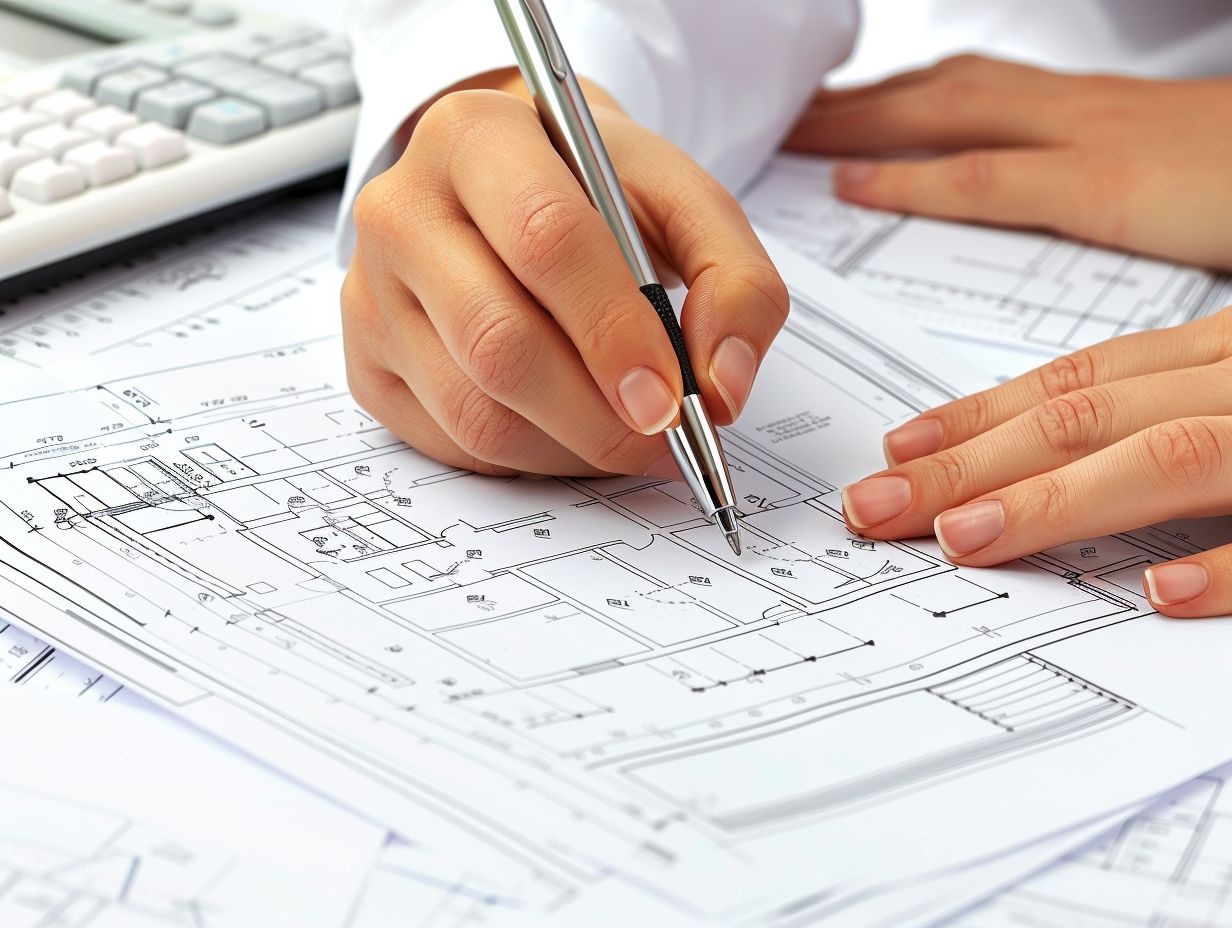
Smart Home Setup 101 Integrating Innovation Into Small Room Designs
Do you have an interest in the notion of a smart home and its potential benefits, particularly within the context of small room designs?
The incorporation of smart technology into one’s living environment has the capacity to transform the dynamics of interaction with the home, offering levels of convenience, efficiency, and financial savings.
Within this article, an examination will be conducted on the fundamental elements integral to a smart home configuration, along with recommendations on cost-effective alternatives. Additionally, a systematic guide will be presented on the seamless integration of innovation into the design of compact living spaces.
Prepare to reconfigure your residential environment with the most recent advancements in smart home technology.
What is a Smart Home?
A Smart Home is defined as a residential space that is furnished with smart devices and appliances capable of remote control by the homeowner. These devices are interconnected via the internet and can communicate with each other, providing homeowners with convenience, security, and energy efficiency.
By leveraging Internet of Things (IoT) technology, smart home devices have the ability to communicate and collaborate seamlessly, optimizing daily tasks for increased efficiency. For example, lighting systems, thermostats, security cameras, and kitchen appliances can be interconnected to establish a unified and effective living environment. Through the remote monitoring and control of these devices using smartphones or voice commands, homeowners can elevate their comfort, safety, and overall quality of life.
The connectivity and automation present in smart homes not only streamline daily routines but also aid in the reduction of energy consumption and subsequent decrease in utility costs.
Benefits of Integrating Smart Technology
The incorporation of intelligent technology into one’s residence heralds an era of innovation that fundamentally transforms the manner in which individuals engage with their domestic surroundings. The interconnectivity among devices and the smooth automation processes establish a futuristic residential setting that not only augments convenience but also bolsters security measures.
Convenience and Efficiency
Smart homes offer unparalleled convenience as they enable homeowners to manage various aspects of their living environment simply by utilizing their devices. The automation functionalities play a crucial role in enhancing energy efficiency and optimizing resource consumption.
This high level of control not only streamlines daily routines but also yields significant energy-saving advantages. Through the capability to remotely adjust thermostats, lighting, and appliances, homeowners can ensure their residence functions optimally even in their absence. By scheduling devices to operate only as necessary, smart homes aid in reducing energy wastage, thereby resulting in decreased utility expenses and a minimized environmental footprint. The seamless incorporation of remote control and voice commands in smart homes heralds a new era of sustainable living, where convenience and efficiency are seamlessly intertwined.
Cost Savings
One of the prominent benefits associated with smart homes is the potential for long-term cost savings. Through the utilization of energy-efficient solutions and the implementation of enhanced security measures, homeowners can effectively decrease utility expenses and mitigate potential risks.
Smart technologies that are integrated within a residence have the capability to monitor energy consumption patterns and automatically adjust settings to optimize overall efficiency. This proactive approach not only results in a reduction of monthly bills but also contributes to a decrease in the property’s environmental impact.
Incorporating features such as smart locks and surveillance systems can offer homeowners a sense of security, potentially leading to lower insurance premiums. While there is an initial investment involved in smart home technology, the returns on this investment are often realized in the long term. This can make the property more appealing to prospective buyers and elevate its market value.
Considerations for Small Room Designs
In the process of developing intelligent solutions for small spaces, the optimization of space emerges as a critical consideration. Smart designs that seamlessly integrate technology into confined areas have the potential to enhance both the functionality and aesthetic appeal of compact rooms.
Space Limitations and Solutions
Small rooms pose unique challenges when it comes to integrating smart home features. By employing space-saving solutions such as multifunctional furniture and compact smart devices, individuals can optimize the functionality of restricted spaces while maintaining efficiency.
These innovative solutions not only aid in organizing and decluttering the room but also establish a seamless and effective living environment. The incorporation of features like collapsible furniture, concealed storage compartments, and intelligent sensors that automatically regulate lighting and temperature enables individuals to fully utilize every available inch in their compact living quarters. Strategic design choices, including the use of mirrors to create an illusion of spaciousness and the selection of sleek, minimalist aesthetics, further elevate the overall ambiance and comfort level within the confined room space.
Budget-Friendly Options
In the realm of small room designs, a pragmatic approach involves the exploration of budget-friendly smart home technology options. Homeowners can elevate their living spaces without exceeding financial constraints through a spectrum of choices encompassing DIY installations and economically priced smart devices.
The utilization of cost-effective solutions such as smart plugs, smart bulbs, and smart speakers presents an avenue through which individuals can seamlessly convert their small rooms into interconnected and efficient environments. These devices not only grant convenience but also facilitate energy conservation, enabling users to regulate lighting, temperature, and entertainment systems effortlessly. The incorporation of these smart technologies not only modernizes a room but also fosters the cultivation of a sustainable lifestyle.
The adaptability afforded by DIY installations give the power tos homeowners to tailor their smart home configuration in accordance with their distinct preferences and requisites.
Essential Components for a Smart Home Setup
In the establishment of a smart home, the meticulous selection of appropriate devices plays a pivotal role in guaranteeing smooth automation and connectivity. Foundational elements such as smart speakers, lighting systems, and temperature controls are considered essential components within the framework of a smart home ecosystem.
Smart Speakers and Voice Control
Intelligent speakers with voice control capabilities function as the central hub for integrating smart home systems, enabling users to interact with a variety of devices by issuing voice commands. The seamless integration of voice control not only augments convenience but also enhances accessibility.
Once incorporated into a smart home configuration, these intelligent speakers can manage a multitude of devices, such as lights, thermostats, locks, and more, exclusively through verbal instructions. This not only simplifies daily tasks but also fosters a more efficient and interconnected living environment.
Users have the ability to set timers, adjust settings, play music, receive weather updates, and obtain answers to inquiries, all through the ease of voice commands. The capacity to link numerous devices and establish personalized routines introduces a dimension of customization to the smart home experience, tailored to the individual needs and preferences of the occupants.
Smart Lighting and Temperature Control
Integrating smart lighting and temperature control systems is essential in establishing a smart home configuration that offers energy-efficient solutions and personalized comfort. These features give the power to homeowners to remotely adjust lighting and climate settings, thus enhancing convenience.
The incorporation of smart bulbs and thermostats into a home automation system can yield substantial reductions in energy consumption and utility costs. Through automated lighting, users can set schedules and leverage occupancy detection capabilities to ensure that lights are only operational when necessary. Moreover, smart thermostats facilitate the optimization of heating and cooling operations based on occupancy patterns and desired temperature levels. The user-friendly interfaces of these devices streamline the process of customizing settings, creating ambiance, and conserving energy, all while maintaining optimal comfort levels for occupants.
Step-by-Step Guide to Setting up a Smart Home
The process of establishing a smart home necessitates a methodical approach to the selection, installation, and integration of smart devices. Through the careful selection of appropriate devices and the seamless integration of these devices, a systematic guide can streamline the procedure for homeowners embarking on home automation.
Choosing the Right Devices
When establishing a smart home, the selection of appropriate devices is of paramount importance to guarantee compatibility and seamless connectivity. An evaluation of the specific requirements of the household and the prioritization of essential devices can streamline the decision-making process.
Key considerations, such as the dimensions of the living space, the number of occupants, and daily routines, should be factored in when determining the type and quantity of smart devices necessary. For instance, larger households may find it beneficial to install multiple smart thermostats to efficiently regulate heating and cooling across various zones. An assessment of the current infrastructure, including Wi-Fi signal strength and compatibility with smart hubs, is crucial to ensure optimal functionality.
Maintaining a balance between functionality and cost-effectiveness is essential. This entails investing in devices that not only enhance convenience but also seamlessly integrate into the daily routines of the household.
Installation and Integration
The incorporation and integration of smart devices are crucial in realizing the full potential of a smart home. The seamless automation and remote access capabilities provided by these devices enhance the user experience and give the power to homeowners to effortlessly manage their living environment.
The initial step in this process involves the selection of compatible smart devices, including smart thermostats, lighting systems, security cameras, and voice assistants. Proper setup entails connecting these devices to a central smart home hub or network to facilitate smooth communication and control.
Upon successful integration, homeowners can benefit from features such as adjusting temperature settings, monitoring security cameras, and remotely turning off lights using a smartphone app or voice commands. This high level of convenience and accessibility not only simplifies daily tasks but also promotes energy efficiency and peace of mind.




No Comments